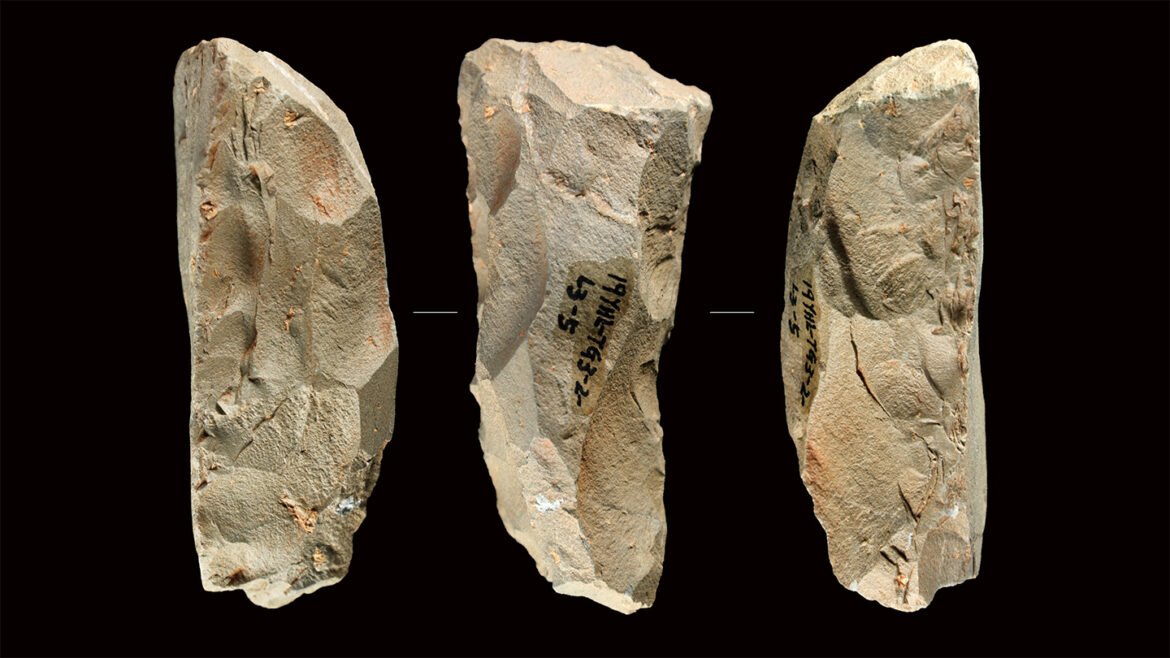
Stone tools traditionally attributed to European and western Asian Neandertals have turned up nearly a continent away in southern China.
Artifacts unearthed at a river valley site called Longtan include distinctive stone cutting and scraping implements and the rocks from which these items were struck. Until now, such items have been linked only to geographically distant Neandertals, says a team led by archaeologists Qi-Jun Ruan and Hao Li of the Institute of Tibetan Plateau Research in Beijing.
The discovery of these roughly 60,000- to 50,000-year-old items challenges a popular idea that Stone Age folks only made relatively simple tools in East Asia, the scientists report March 31 in the Proceedings of the National Academy of Sciences. The Longtan finds represent the first definitive East Asian examples of what researchers call Quina scrapers and cores, they say. Researchers named these stone implements after La Quina, a French Neandertal site where they were found and first described in 1953.
Excavations at the Chinese site in 2019 and 2020 produced 3,487 stone artifacts. From that total, the investigators identified 53 Quina scrapers — long, thick stone flakes bearing clusters of scalloped edge marks where users had resharpened the tools several times. The researchers classified another 14 finds as cores — rocks that had been chiseled into forms from which toolmakers pounded off Quina scrapers.
It’s unclear how Quina toolmaking reached ancient Longtan, Li says. Close cousins of Neandertals called Denisovans inhabited southern Siberia more than 200,000 years ago and could have developed East Asian Quina tools on their own. No evidence suggests that Denisovans trekked outside East Asia, but perhaps well-traveled European Neandertals brought Quina know-how to the Longtan region.
Versatile, reusable Quina tools greatly assisted mobile groups, such as the Longtan crowd, that faced increasingly cold and harsh environments, says archaeologist Davide Delpiano of the University of Ferrara in Italy. Under that pressure, Denisovans or possibly still-undiscovered Asian hominid populations independently devised Quina tools, he suspects.
Clues to this mystery, which Delpiano assisted in unveiling, may soon emerge. “Now we have found more than 30 sites containing Quina [artifacts] surrounding Longtan in the same river valley,” Li says.
Source link


